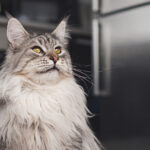Flat-faced cats, also known as brachycephalic breeds, possess an undeniable allure with their distinctive round faces, large expressive eyes, and endearing pushed-in noses. Beyond their captivating looks, these feline companions are known for their equally charming and unique personalities, making them beloved pets worldwide.
However, it’s important to acknowledge that the very physical traits that contribute to the popularity of flat-faced cat breeds can also predispose them to certain health considerations. Prospective owners should conduct thorough research into the specific needs of a breed before bringing a kitten home. This proactive approach ensures you can find the perfect feline companion and be well-prepared to provide them with the best possible care throughout their lives.
Popular Breeds of Flat-Faced Cats
1. Persian
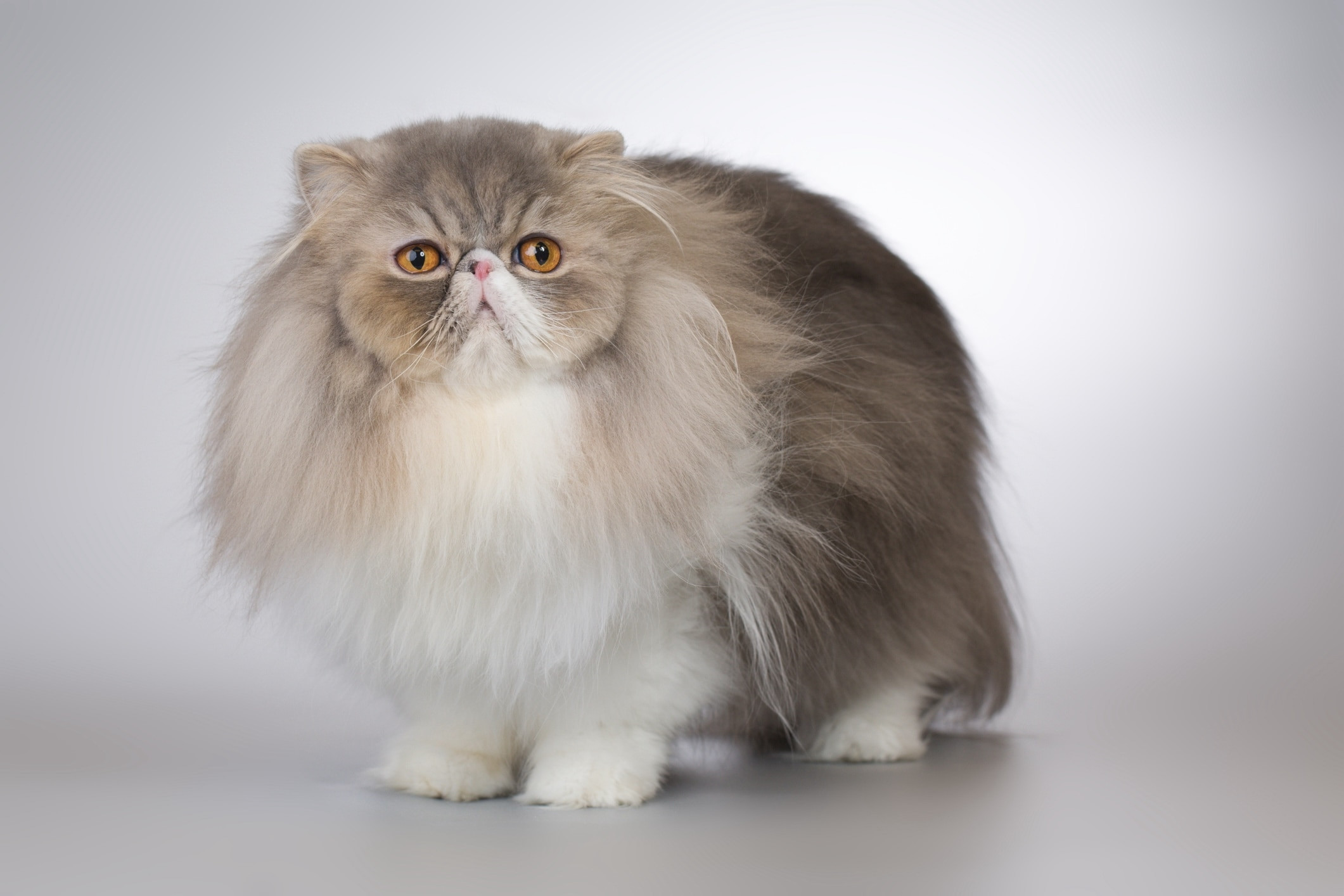 longhaired gray and white persian cat on a gray background
longhaired gray and white persian cat on a gray background
The Persian cat, with its luxurious long coat and characteristically flat face, stands as one of the most globally recognized and cherished cat breeds. Beyond their striking appearance, Persian cats are celebrated for their gentle and placid temperaments. Stephen Quandt, a certified feline training and behavior specialist (CFTBS), highlights their even-keeled nature and peaceful disposition as key factors in their enduring popularity.
Persians are the epitome of relaxed companions, preferring leisurely activities such as napping on laps and basking in sunbeams over energetic pursuits like scaling cat trees or engaging in vigorous play. According to Quandt, their playfulness is subtle and gentle, often seeming like an afterthought. Simple toys like feather wands are usually sufficient to entertain these laid-back felines.
While their magnificent coats require daily combing and brushing to prevent matting, Persians often relish grooming sessions, frequently expressing their contentment with soft meows and gentle purrs as tokens of appreciation for their human companions’ care.
2. British Shorthair
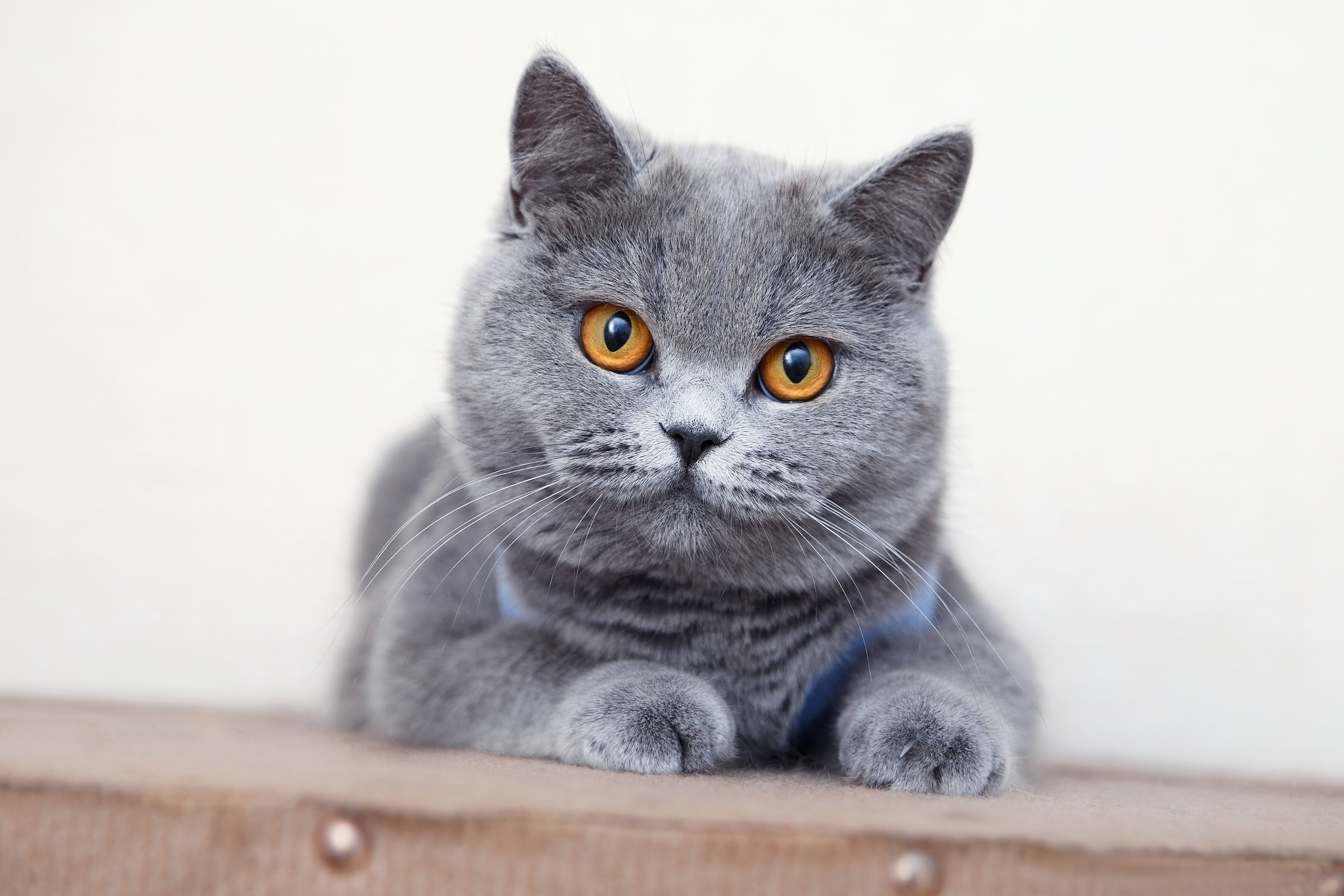 british blue british shorthair cat close-up
british blue british shorthair cat close-up
British Shorthair cats exhibit a round-faced charm, although their muzzles are somewhat more pronounced compared to breeds like the Persian. Their undeniably round faces, coupled with their dense, plush fur, contribute to a teddy bear-like appearance that adds to their appeal.
These sturdy and affectionate cats generally prefer to remain grounded, displaying a lesser inclination for being picked up and carried. While they are known to be affectionate and enjoy human company, British Shorthairs also possess an independent streak, appreciating moments of solitude. This balanced temperament makes them well-suited companions for individuals and families with busy lifestyles.
3. British Longhair
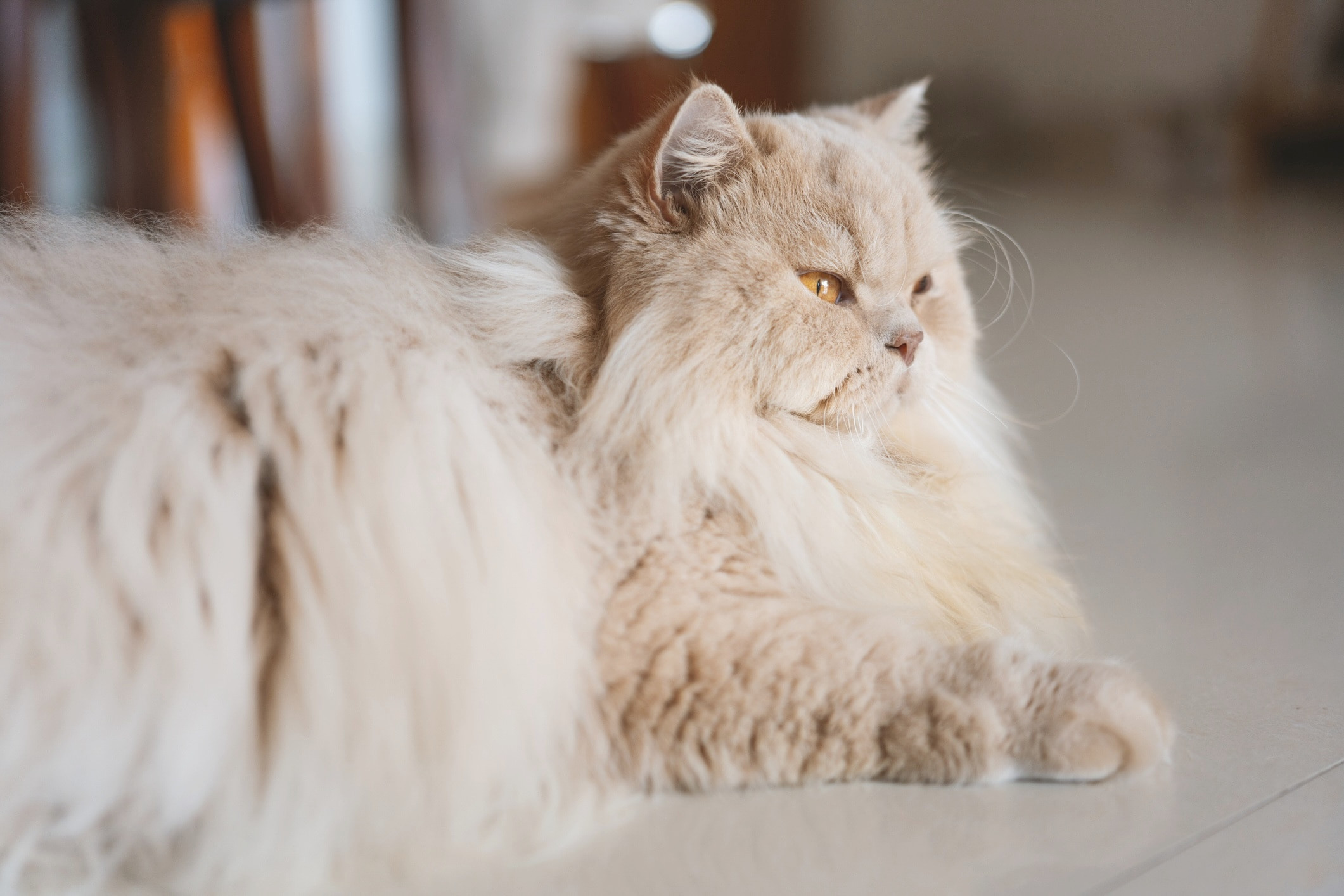 longhaired cream-colored british longhair cat lying down
longhaired cream-colored british longhair cat lying down
The British Longhair emerges as a delightful blend of the British Shorthair and Persian breeds, inheriting the luxurious, thick coat from the Persian lineage and the rounded facial features from the British Shorthair. They also benefit from a wonderfully balanced temperament derived from both parent breeds.
Known for their intelligence, British Longhair cats demonstrate a notable food motivation, which can be effectively channeled into positive reinforcement training. Their eagerness to learn new tricks provides an excellent opportunity for bonding and mental stimulation through engaging training sessions.
4. Exotic Shorthair
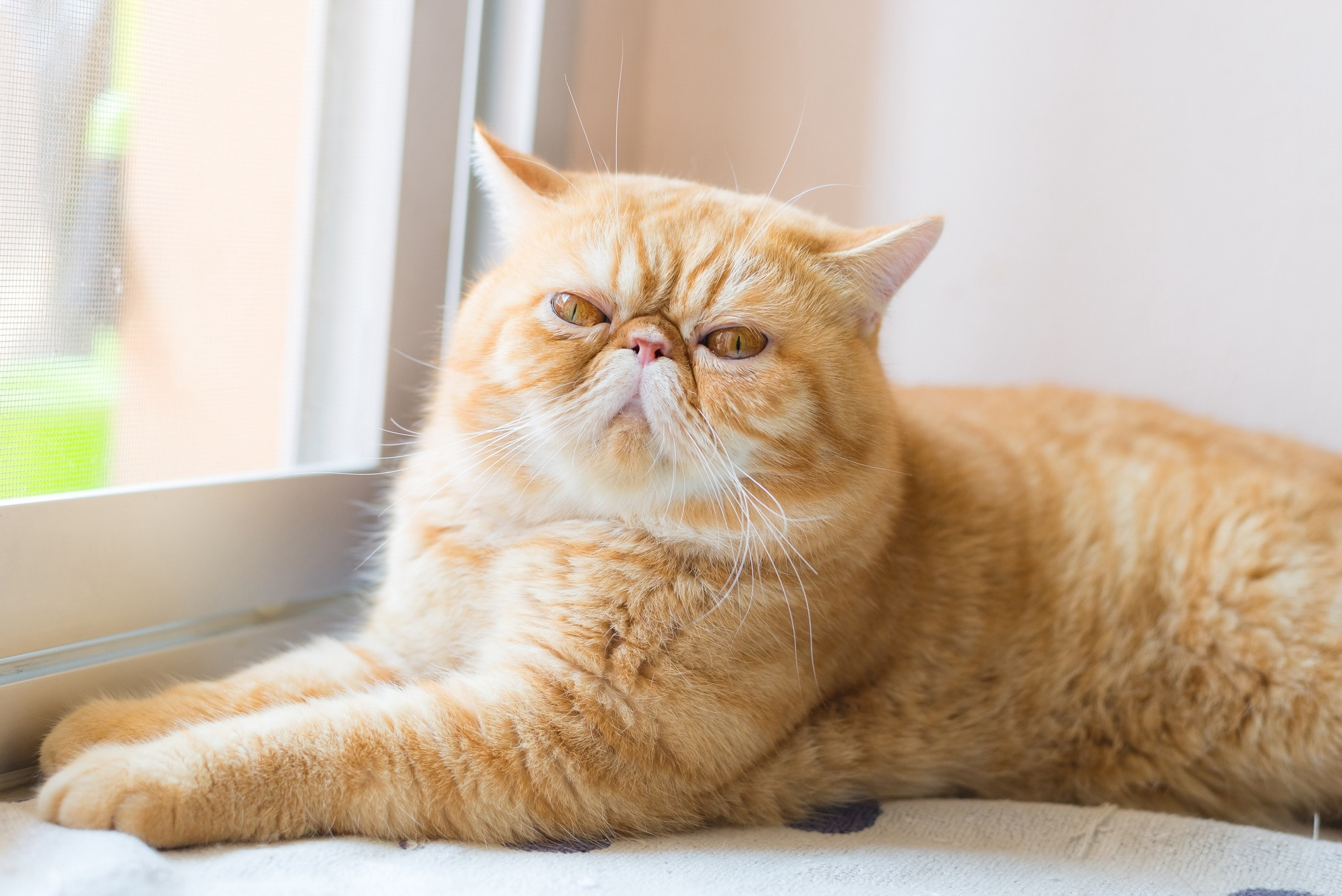 orange tabby exotic shorthair cat lying by a windowsill
orange tabby exotic shorthair cat lying by a windowsill
For those captivated by the Persian’s aesthetic but seeking a less demanding grooming regimen, the Exotic Shorthair presents an ideal alternative. Often playfully referred to as the “lazy man’s Persian,” their grooming requirements are significantly reduced, typically involving only weekly brushing, with potentially more frequent sessions during seasonal shedding periods.
Similar to their Persian relatives, Exotic Shorthairs are not known for their acrobatic climbing abilities or a penchant for seeking out high vantage points. However, they generally exhibit a more energetic and playful nature, making them well-suited companions for active households, including families with children and other pets, provided introductions are managed carefully and properly.
5. Himalayan
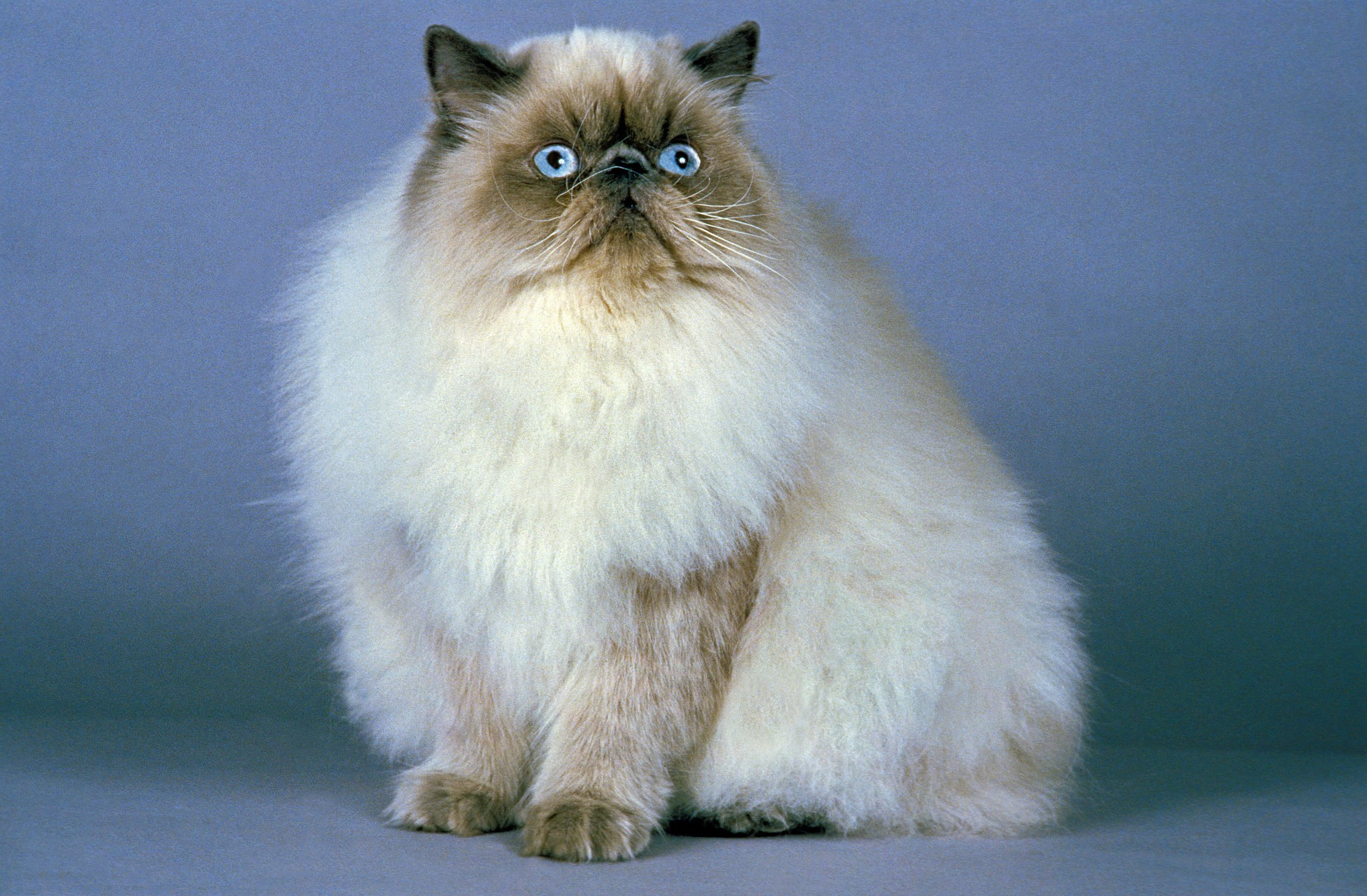 himalayan cat sitting against a blue background
himalayan cat sitting against a blue background
The Himalayan cat, a captivating crossbreed of Persian and Siamese lineages, shares numerous characteristics with the Persian, inheriting their luxurious long fur. Distinctively, they derive their striking color point markings—darker coloration on the ears, nose, paws, and tail—from their Siamese ancestry. Despite their fluffy appearance, Himalayans are medium-sized cats, typically weighing between 7 and 12 pounds.
Himalayan cats are known for their adaptable and friendly nature, readily extending affection to those who treat them kindly. They integrate seamlessly into various family settings, provided their daily grooming needs are consistently met.
6. Scottish Fold
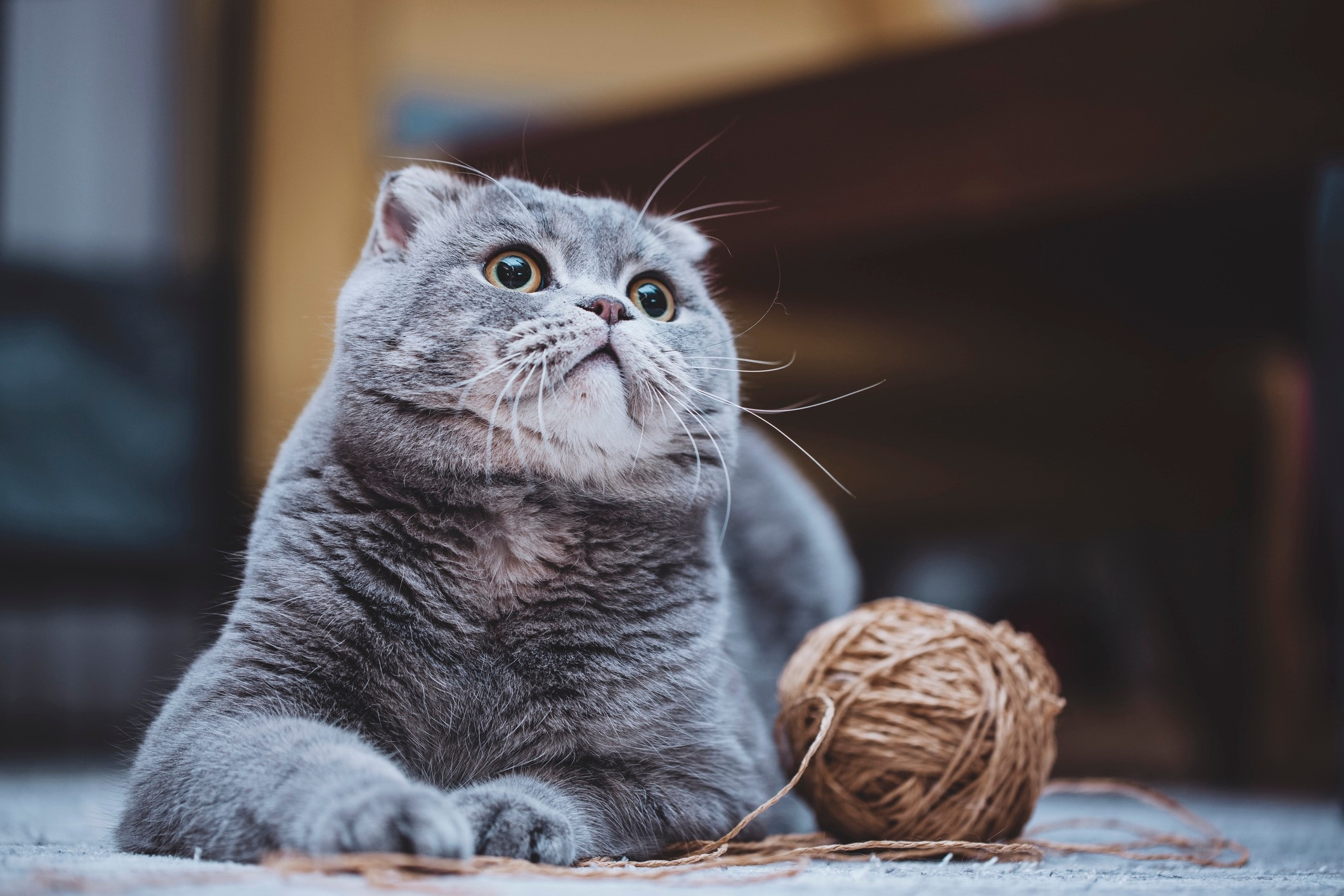 gray scottish fold lying next to a ball of yarn
gray scottish fold lying next to a ball of yarn
Scottish Folds have gained immense popularity, largely attributed to their uniquely rounded facial features, distinctive folded ears, and association with celebrity figures. However, the breed’s charm is accompanied by ethical concerns regarding their health and well-being.
While described as “sweet and friendly” in temperament, the Scottish Fold’s signature folded ears result from a genetic mutation that causes osteochondrodysplasia (OCD), a painful and degenerative joint condition.
Prospective owners considering a Scottish Fold should prioritize understanding feline body language to recognize subtle signs of discomfort. Changes in appetite, altered bathroom habits, increased vocalization, decreased interest in usual activities, or even uncharacteristic aggression should not be overlooked and warrant veterinary consultation.
7. Selkirk Rex
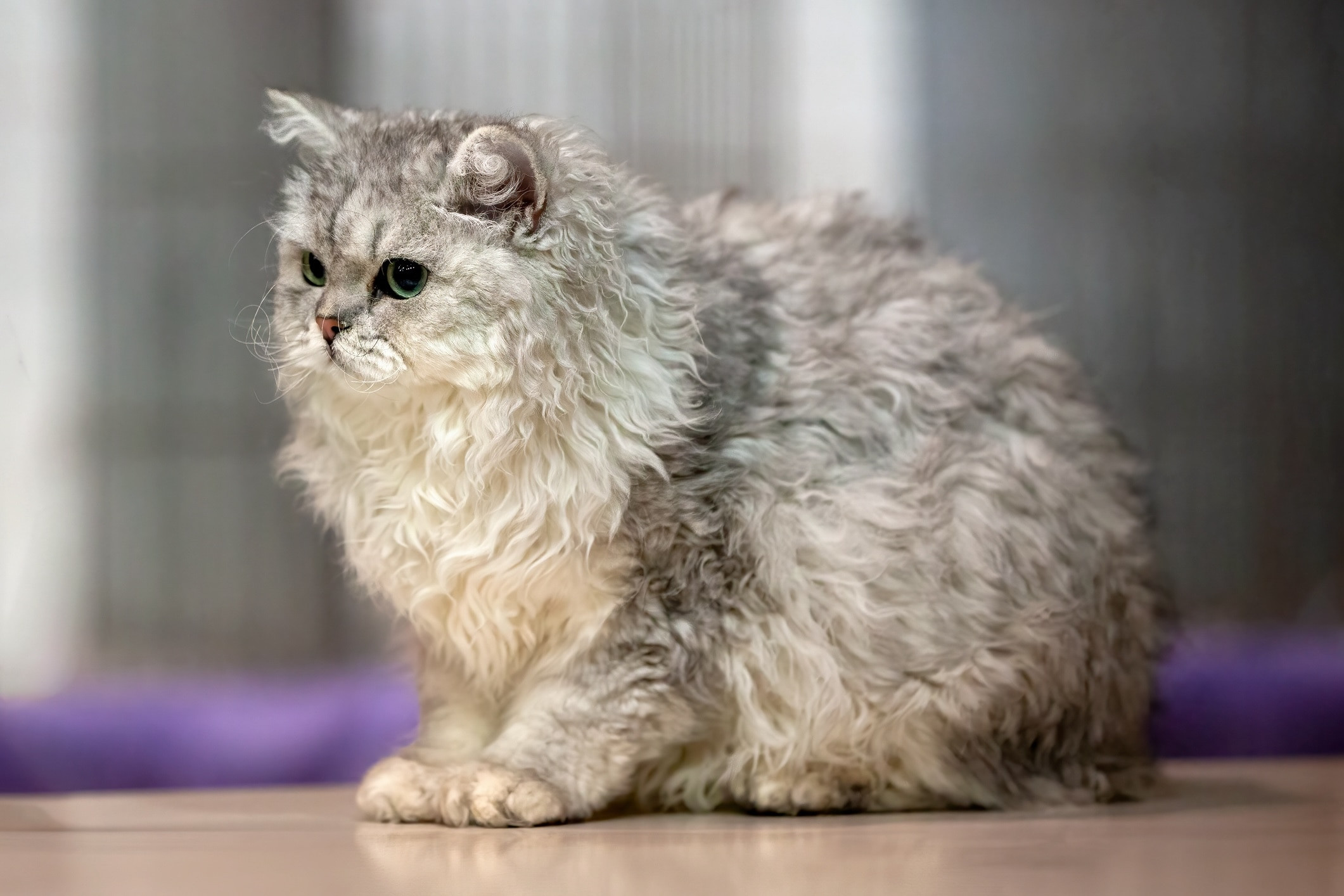 curly-coated selkirk rex cat loafing on the floor
curly-coated selkirk rex cat loafing on the floor
The Selkirk Rex breed is distinguished by its unique curly coat, resulting from a genetic mutation. Their fur, described as a dense mane of curls ranging from tight ringlets to gentle waves, is attributed to outcrossing with Persian and British Shorthair breeds. While they do shed, weekly grooming is typically sufficient, but excessive brushing should be avoided to prevent frizzing or breakage of their delicate curls.
Selkirk Rex cats are generally known for their sweet and affectionate personalities, displaying a fondness for human interaction. Early socialization experiences with diverse people, environments, sights, and sounds are crucial to ensure they develop into well-adjusted and confident adult cats.
Health Considerations for Flat-Faced Cats
While all cats can experience health issues throughout their lives, flat-faced breeds may face a heightened risk of certain health challenges due to their brachycephalic anatomy. The structure of their skulls results in shorter bones, leading to a rounded head shape, a shortened nose, and a lower jaw that protrudes beyond the upper jaw (underbite).
Brachycephalic Obstructive Airway Syndrome (BOAS)
Brachycephalic obstructive airway syndrome (BOAS) is a collective term encompassing respiratory problems commonly observed in brachycephalic cats and dogs, stemming from their unique anatomical structure.
In flat-faced cats, their distinctive anatomy can lead to breathing difficulties due to several factors:
- An excessively long soft palate obstructing airflow.
- A narrowed windpipe (hypoplastic trachea) restricting air passage.
- Everted laryngeal saccules, small sacs within the larynx, protruding and causing obstruction.
- Narrowed nostrils (stenotic nares) limiting air intake.
While the characteristic snoring and snorting sounds may be perceived as endearing, BOAS can manifest in various symptoms, depending on the severity of airway obstruction. Common signs include open-mouthed breathing, noisy respiration, reduced tolerance to exercise and heat, coughing, gagging, reverse sneezing, and increased respiratory effort.
These symptoms can be exacerbated by factors such as obesity, exposure to hot and humid environments, and stress. Owners of flat-faced cats must be vigilant in monitoring for any signs of respiratory distress.
Open-mouth breathing in cats is always a serious indicator and requires immediate veterinary attention. In severe BOAS cases, surgical intervention may be recommended to alleviate airway obstruction and improve breathing.
Eye Issues
The shallow eye sockets characteristic of flat-faced cats cause their eyes to protrude, and their eyelids may not fully close, leaving them vulnerable to inflammation and corneal ulcers (scratches on the eye surface). Chronic watery eyes, often accompanied by tear staining, are also common. The compressed facial structure can also lead to malformed tear ducts, further contributing to tear drainage issues.
Consulting with a veterinarian is crucial to determine appropriate products and strategies for maintaining eye hygiene and health in flat-faced cats.
Seek veterinary care if you observe squinting, increased eye discharge (especially if yellow or green), pawing or rubbing at the eyes, or redness or cloudiness of the eyes.
Dental Disease
Dental disease is highly prevalent in the feline population, affecting a significant majority of cats over four years of age. Flat-faced cats face an even greater predisposition to dental issues due to their anatomical features, often resulting in overcrowded and misaligned teeth. This dental arrangement can promote increased plaque and tartar accumulation, elevating the risk of dental disease.
Daily tooth brushing and regular veterinary dental checkups and cleanings are paramount in preventing dental problems in flat-faced cats. These proactive measures are essential for maintaining their long-term oral health.
WRITTEN BY
Content Creator at solcat.net

